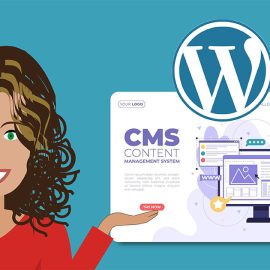
8 Proven Techniques That Build Trust in Your Website
The internet can be a worrisome place. Whether you are just browsing the web or you go online to make purchases, people are leery about everything they do on the web. From credit card fraud to identity theft, it can be tough to gain people’s trust on your website.
It isn’t impossible to gain the trust of your website visitors. You can implement a few visual aids that will build trust and increase conversions for your website.
1. Badges
If your policy includes a money-back guarantee, or you stand by the quality of your product, you can implement a badge or emblem to promote this aspect of your business. For example, if you offer a 1-year warranty, you could place a silver or golden sticker with this information somewhere on your sales page.
Typically, you would place it near the “Buy Now” button to help convince visitors of the quality of your products or services. The best colour to use is gold, because it speaks of the value and worth of what you are promoting.
It’s a good idea to avoid colours such as red, because that represents danger and is the visual cue to stop, as we know from traffic lights and stop signs. Whatever colour you choose, it should contrast with the other colours of your website.
2. Client logos
Nothing builds trust as much as your work history. If you already have a proven track record, you are more likely to gain new business. Showing off logos from satisfied clients speaks volumes for your work. It’s a great way to build trust, because it shows that you have experience.
Another aspect to this is that when business owners see that you’ve helped other businesses, and those businesses are recognised as being successful, people want to have the same success. They want the same results those established businesses have.
A golden rule that a lot of business owners follow is to look at successful businesses and imitate what they do.
3. Payment logos
People are terrified of being a victim of credit card fraud or identity theft. If you are selling anything on your website, you can help ease the minds of average visitors by implementing payment logos. Adding logos that they recognise is a great way to build trust.
This is especially true is you accept payments on your website by using secure checkout methods, such as PayPal. You should definitely include a PayPal logo near the purchase buttons on your website, as well as on the checkout page itself. This can help build confidence and reduce shopping cart abandonment.
If your business can show that it is Better Business Bureau Accredited, it can further add to your credibility.
4. A strong About page
This may seem unnecessary, but it can go a long way to building trust and rapport with your first-time visitors and avid readers. It can actually turn those first-timers into regular readers. People don’t like faceless entities or buying from them. Many people want to make a connection with leaders in their industry.
When you create an About page the right way, you put an identity with the business. Adding a personal touch makes you and your website seem much more approachable, making visitors more open to making a purchase.
If you have a whole team, show a photo of each member, along with a description of their skills. It will give future clients an idea of who they may be working with on their particular project.
5. Show your face
People like to do business with people more than they do faceless entities. Adding a personal touch to your website can go a long way with building trust. People are more likely to trust what you have to say, if you are willing to show your face.
This actually serves dual purposes. Showing your face will help build recognition for you personally, but it also builds trust with visitors.
It’s tough to build trust and authority with a website when you can’t put a face with the name. Showing a professionally shot photo of yourself dressed well, shows visitors that you stand by your website, its content and any products enough that you’ll put your face on it. Not only will your website be more inviting, but visitors tend to remember a person better when they have a visual representation of them in their head.
6. Social proof
You probably run into instances of social proof on a daily basis, but you just aren’t away of it. Social proof with where a website owner with a decent social media following will place their social media counts on their website as proof of their success. This method goes a long way to building trust.
When a visitor sees that 10,000 people are following a website on Facebook, it immediately establishes authority. That many Facebook followers don’t come from thin air. It says a lot about a website. It says that a website has been around a while, that it has good content and useful information, and that they won’t disappear by tomorrow.
Social proof also appeals to the area of our psyche that wants to be included. We don’t want to miss out on information that 10,000 other people like us already know. Which person or company are you likely to follow on Facebook? You’d be more likely to follow the person with 50,000 followers than the person who is following 2000 people, but only has 50 followers of their own. Social proof reinforces your credibility.
7. Testimonials
This is one of the biggest ways to build trust in your products and services. If you can display a number of people who are willing to provide documented quotes, endorsing your business, it attests to the quality of your work. It also adds another human element that helps to break through the walls that people typically put up when browsing the web.
Many people have the “me too” mentality, which is perfect for testimonials. People like to feel included. When you show that you’ve solved some of the same problems other people have had using your products or services, they want the same results. When they identify with one of the people from the testimonials section of your website, they realise that your services can solve their problems, which typically leads to a sale.
8. Useful information
When you provide useful information, such as tips or how-to guides — in addition to your sales content — it instantly builds trust with visitors to your website. They come looking for information, and if you spend the time to offer valuable, helpful tips for free, it opens them up to everything else you have to offer. Building trust and establishing authority and knowledge in your industry go hand-in-hand.
This approach also lets them know that you aren’t there just for a quick sell. Providing helpful information builds a relationship with visitors. If you do this on a regular basis, you’ll build repeat traffic.
Someone may not make a purchase on your website the first, second or even the third time. However, even if it takes 10 visits to your website, a sale is still a sale. It’s important to keep in mind that many businesses are focusing more on long-term relationships with their customers. This pays off with loyal customers.
Conclusion
There are a lot of challenges when it comes to building trust online. You are limited in the amount of time you have to convince visitors that you and your products are genuine. These simple actions can go a long way with building trust with your website visitors.
SOURCE: Web Designer Depot
Need a professional looking website?



